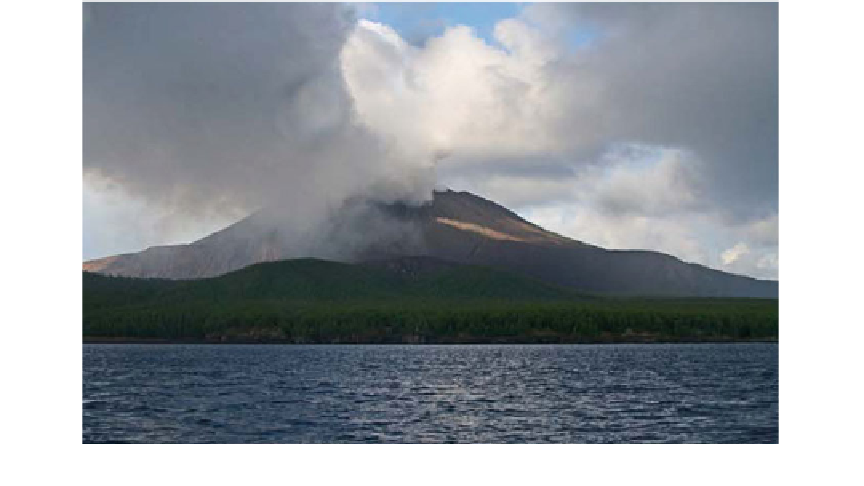Environmental Engineering Reference
In-Depth Information
Fig. 7.5
Emission of gas and ash at Pagan Island
ejection of primarily phreatic ash until 1996.
From 1996 onwards no emissions were docu-
mented until early December 2006 when ash and
gas plumes were reported by local residents and
were observed in satellite imagery. This stint of
eruptive activity ended later that month, and the
volcano remained quiet until mid-April 2009.
Although ground-based geophysical instruments
are lacking on Pagan, USGS records show that
volcanic activity increased in 2009 and frequent
observations of gas and ash emissions have been
documented up to December 2010 (Fig.
7.5
).
Pagan
increase in iron concentration can initiate
cyanobacterial blooms. Although a great deal of
progress has been made in recent years, there are
still signi
cant gaps in our understanding which
hamper our ability to predict the outcomes of
volcanic activities on blue carbon domain. Some
of the most important areas in which we lack a
general or even basic understanding include (i)
the importance of rates, timing, magnitude and
duration of environmental change associated
with volcanic eruption, (ii) non-additive effects
of multiple stressors, (iii) population-level
implications of variable environmental impacts
among life-history stages, (iv) the scope for
population- or species-level adaptation to envi-
ronmental change caused by volcanic activities
and (v) ecological responses at the level of
communities and ecosystems, including tipping
points and sudden phase shifts. With regard to
uncertainties in the nature of environmental
forcing, we require additional eco-physiological
and eco-mechanical studies
s volcanic rocks mainly consist of sil-
icon dioxide (SiO
2
, 50.5 %), aluminium oxide
(Al
2
O
3
, 17.4 %), and iron oxides (Fe
2
O
3
and
FeO, 11.2 %). The latter compounds are the most
likely candidates to stimulate cyanobacterial
growth as iron requirements of cyanobacteria are
greater than other algal groups because of their
high PS I to PS II ratio and the presence of
nitrogenase in diazotrophs. The iron limitation of
cyanobacteria in oligotrophic coral habitats has
been attributed to their evolutionary origin in an
anoxic ocean with high bioavailability of iron.
When volcanic ash dissolves in sea water, bio-
active trace metals such as iron become imme-
diately available to primary producers and
experimental studies have demonstrated that this
'
especially ones that
move beyond single-factor ANOVA designs
—
—
and further development in the emerging
eld of
ecological genomics to identify biological
responses to key environmental drivers or com-
binations of drivers that are associated with
volcanic activities.

